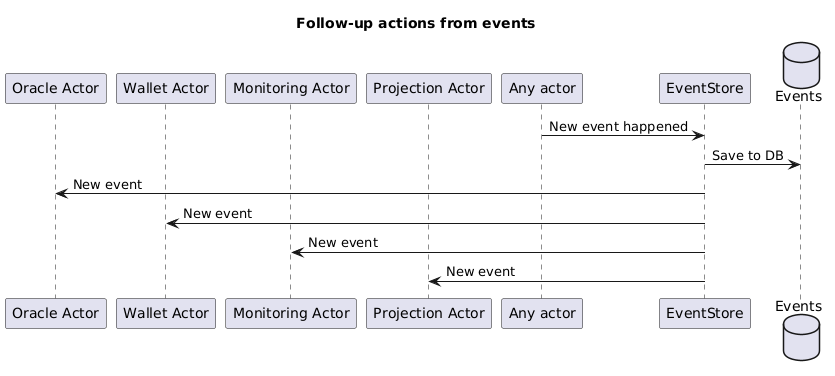You can not select more than 25 topics
Topics must start with a letter or number, can include dashes ('-') and can be up to 35 characters long.
61 lines
3.0 KiB
61 lines
3.0 KiB
|
3 years ago
|
# Technical vision
|
||
|
|
|
||
|
|
In this document, I want to capture the mid term technical vision for the project.
|
||
|
|
Hopefully, this will make it clearer why we are working on certain parts of the codebase and which direction we should be transitioning them into.
|
||
|
|
This is a living document so check back regularly for updates!
|
||
|
|
|
||
|
|
## Resilience
|
||
|
|
|
||
|
|
### Always available UI
|
||
|
|
|
||
|
|
Ideally, starting the application is non-fallible and always present a UI to the user.
|
||
|
|
The user should be able to see the "health" of certain subsystems (wallet, blockchain, maker-connection, database, ...) and potentially take action in fixing them or we take an automated action in attempting to fix them.
|
||
|
|
|
||
|
|
### Self-healing
|
||
|
|
|
||
|
|
Our application should be self-healing.
|
||
|
|
This means, if certain components fail (like the websocket connection to BitMex), we should be able to restart them.
|
||
|
|
Starting and stopping is a first-class feature of actors.
|
||
|
|
In an ideal world, we tie the lifetime of these processes to an actor and thus, restarting the actor will restart that subsystem.
|
||
|
|
As a consequence, other actors need to properly deal with the fact that sending a message to another actor might yield the `Disconnected` error.
|
||
|
|
|
||
|
|
## Network communication
|
||
|
|
|
||
|
|
### Multiplexing
|
||
|
|
|
||
|
|
Our current network stack is solely built on top of TCP which does not support multiplexing.
|
||
|
|
Some of the complexity in the codebase stems from this missing feature.
|
||
|
|
For example, because we don't have any multiplexing, the `connection::Actor` needs to know, where to route messages for contract-setups, rollovers or collaborative settlements.
|
||
|
|
If we had a network stack with multiplexing support, we could open a dedicated stream just for a single protocol and hand both ends of the stream to such an actor and the right messages would "magically" arrive at the right actor.
|
||
|
|
|
||
|
|
## Model
|
||
|
|
|
||
|
|
### Event sourcing
|
||
|
|
|
||
|
|
Use event-sourcing as the core building block for modelling the state changes to a CFD.
|
||
|
|
Changes to a CFD are done by executing a _command_ on the CFD.
|
||
|
|
Executing a _command_ will produce a _Domain Event_.
|
||
|
|
A _Domain Event_ represents a _state change_ in the system.
|
||
|
|
These events are sent to a dedicated actor which first persists them and then broadcasts them to other actors.
|
||
|
|
Other actors can then react to this state change and
|
||
|
|
|
||
|
|
- update the UI
|
||
|
|
- interact with downstream systems (electrum, oracle, ...)
|
||
|
|
|
||
|
|

|
||
|
|
|
||
|
|
### Naming
|
||
|
|
|
||
|
|
Align all terminology in the codebase closer with financial terms.
|
||
|
|
See also https://github.com/itchysats/itchysats/discussions/829.
|
||
|
|
Current issues:
|
||
|
|
|
||
|
|
- Order vs offer
|
||
|
|
- "Settlement" interval
|
||
|
|
- Interest vs funding rate
|
||
|
|
|
||
|
|
### IO-free yet contained
|
||
|
|
|
||
|
|
The execution of the protocols for contract setup and rollover are [IO-free](https://sans-io.readthedocs.io/how-to-sans-io.html).
|
||
|
|
More details here: https://github.com/itchysats/itchysats/issues/698.
|